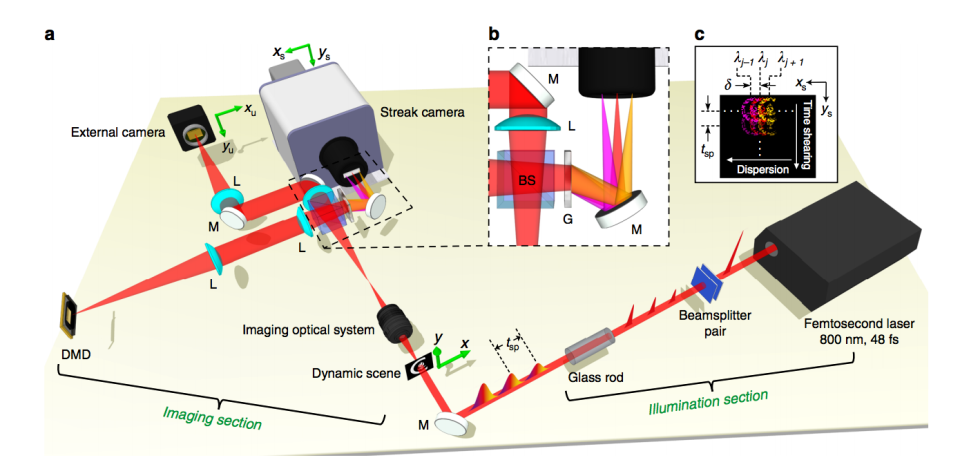The World's Fastest Camera Is Frankly Mind-Boggling

Scientists developed a new camera that can take a whopping 70 trillion frames per second.
One of the inventors calls the new process compressed ultrafast spectral photography, or CUSP.
The study appears in the April 29 edition of Nature Communications.
For as much as cameras allow us to experience phenomena that would otherwise go unnoticed, their imaging speeds still fundamentally limit our capability to see, well, everything. Now, scientists at the California Institute of Technology hope to change that.
In a new paper published in the journal Nature Communications, the scientists outline a new imaging technique that can capture a mind-boggling 70 trillion frames per second.
Prior imaging developments based on silicon sensors have ushered in speeds up to millions of frames per second, Lihong Wang, a medical engineering and electrical engineering professor at Caltech, tells Popular Mechanics. But that still isn't nearly fast enough to observe and document some of the most fleeting curiosities in our physical world, from nuclear fusion, to ultrashort pulses of light on the order of picoseconds (10−12 second), to the fluorescent radioactive decay of molecules.
Scientists usually study these ultra-fast occurrences by triggering the desired event multiple times and repeatedly observing it through a different window of time. This nonlinear approach, often used to study chemical reactions, is called the pump-probe method. While clever, it's still impossible to render images of the ultrafast events in real time, which means only repeatable tasks may benefit from it.

Wang's technique, which he calls compressed ultrafast spectral photography (CUSP), uses short pulses of laser light that each last for just one femtosecond, or one quadrillionth of a second. It's easiest to think of the advanced process in two steps: imaging and illumination.
First, in the imaging phase, an interchangeable lens system captures the scene at hand, splitting the light pathway into two separate streams. In one of those paths, an external camera captures the undispersed image. In the other, a digital micromirror device encodes the image into a pseudorandom binary pattern and relays it to the entry port of a streak camera, which measures variation in a pulse of light's intensity.
Streak cameras are mostly notably used in lidar systems, which self-driving cars use to "see" the world around them.
In the illumination section, a beamsplitter breaks up a laser pulse into a series of smaller oscillations. Each of the smaller pulsations triggers a sensor in the camera, taking an image. This occurs 70 trillion times per second.
While that's a huge figure, each frame actually only contains a small amount of data.
"Think of it as a movie: The frequency of the movie is not that long, so the total number of frames is not that long," Wang says. "It’s like an atomic bomb, nuclear fusion. Total energy is always conserved, so it'll end fast."
This isn't Wang's first foray into lightning-fast imaging. The CUSP endeavor actually builds on his earlier work on phase-sensitive compressed ultrafast photography (pCUP). That method could snap images of light traveling in slow motion at 10 trillion frames per second.
But the latest advancement is about seven times better, which makes all the difference. "We’re getting more fine details. Using the old version, you couldn't see very well," Wang says.
Some national labs are already using past versions of Wang's imaging technology, so it's only a matter of time before the same happens with the new and improved setup. The only barrier is that the device is "not that cheap," Wang says. But it's possible for researchers to use the same exact setup with a cheaper camera to get high-speed results that are satisfactory—just not as fast as the original.
So how fast will his next camera be?
"I don’t think anyone knows the limit yet," Wang says. "It’s hard to project where we can reach."
You Might Also Like

